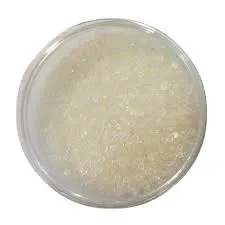The Role of Water Cleaning Chemicals in Ensuring Safe Water Supply
Water is essential for life. It is a fundamental resource that sustains humanity as well as ecosystems. However, the water we access daily is often not pure and can contain harmful contaminants, rendering it unsafe for consumption and use. To combat this issue, various water cleaning chemicals play a crucial role in purifying water, ensuring it is safe for drinking, cooking, and other applications. This article delves into the significance of these chemicals, their functionalities, and the technologies used in water purification.
Understanding Water Contaminants
Water contaminants can be broadly categorized into biological, chemical, and physical pollutants. Biological contaminants, such as bacteria, viruses, and parasites, can lead to serious health issues if ingested. Chemical contaminants include heavy metals, nitrates, and pesticides, which can originate from agricultural runoff and industrial discharges. Physical pollutants, like sediments and debris, affect water clarity and quality. The presence of these contaminants in our water supply necessitates the use of water cleaning chemicals to ensure safety.
Key Water Cleaning Chemicals
There are numerous chemicals employed in the treatment and purification of water, each serving a specific purpose
1. Chlorine and Chloramine These are commonly used disinfectants that eliminate harmful microorganisms in drinking water. Chlorine is effective at killing bacteria and viruses, while chloramine, a combination of chlorine and ammonia, provides a longer-lasting residual effect, helping to maintain water quality as it travels through pipelines.
2. Alum and Ferric Chloride These coagulants are used to remove suspended particles and turbidity from water. They work by aggregating tiny particles into larger flocs, which can then be easily removed during the sedimentation process.
3. Activated Carbon Known for its adsorptive properties, activated carbon is employed to remove organic compounds, chlorine, and odors from water. It is particularly effective in improving the taste and odor of drinking water.
4. Ozone As a powerful oxidant, ozone is used for disinfection and the removal of organic and inorganic contaminants. It decomposes quickly, leaving no residual chemicals, making it an environmentally friendly option.
5. Hydrogen Peroxide This chemical acts as a disinfectant and oxidizing agent. It is often used in conjunction with UV light or ozone for enhanced purification.
water cleaning chemicals

6. Reverse Osmosis Membranes Though not a chemical, reverse osmosis is a widely used technology that utilizes semi-permeable membranes to remove ions, unwanted molecules, and larger particles from water. Chemical additives are often used to enhance the efficiency of this process.
Technologies in Water Purification
The implementation of water cleaning chemicals is typically part of a broader water treatment process that includes several technologies
- Filtration Physical barriers are used to separate impurities from water. This can include sand filters, membrane filtration, and activated carbon filters.
- Disinfection In addition to chemical disinfectants, physical methods such as UV radiation and heat are employed to destroy pathogens.
- Ion Exchange This process involves the exchange of ions in the water with ions attached to a resin, effectively removing hardness-causing minerals and other contaminants.
Environmental and Health Considerations
While water cleaning chemicals are vital for ensuring safe water supply, it is important to carefully manage their use. Over-reliance on chemical treatments can lead to by-products that may have adverse effects on human health and the environment. Therefore, regulation and monitoring are essential components of water treatment strategies to maintain a balance between effective purification and safety.
Conclusion
Water cleaning chemicals play an indispensable role in providing safe, clean water to communities worldwide. With a diverse range of chemicals and advanced technologies at our disposal, we are better equipped than ever to tackle water contamination challenges. By understanding the significance of these chemicals and their applications, we can ensure that our water supply remains safe and sustainable for future generations. As we continue to navigate environmental changes and population growth, the importance of effective water treatment processes cannot be overstated. Safe water is a fundamental right, and it is essential that we continue to innovate and improve our methods of purification.

